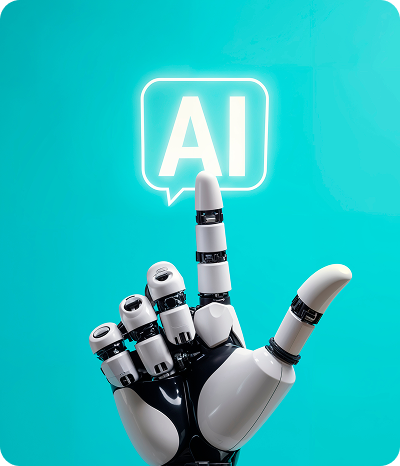Agentic AI Manufacturing Case Study
From 55% to 92% Accuracy: How Autonomous AI Agents Transformed Defect Detection
For a manufacturer of high-precision components, tiny, hard-to-spot defects like micro-fractures were a costly problem. The manual visual inspection process was inconsistent, achieving only a 55% success rate for these subtle but critical flaws. To make matters worse, the response process was painfully slow; once a defect was flagged, it took an average of 10 hours of manual logging and communication before a corrective action was formally assigned, allowing more faulty parts to be produced.
The Solution: Autonomous Quality Monitoring & Real-Time Response
To solve this, a state-of-the-art agentic AI solution was designed to act as an autonomous quality control system. While traditional machine vision systems from providers like Cognex or Keyence are good at spotting pre-programmed defects, they lack the ability to reason or act. This agentic solution provides a distinct advantage by not just detecting issues but also initiating the entire response workflow autonomously.
The system’s key functions include:

Continuously monitoring the production line by integrating directly with sensor and imaging systems.

Detecting defects in real-time with 92% accuracy, far exceeding the capabilities of a dedicated human expert.

Analyzing and triaging defects on the fly, instantly assessing severity, and either triggering a predefined workflow or escalating novel anomalies to a human expert.

Intelligently routing workflows by automatically creating a work order in the client's Manufacturing Execution System (MES) and assigning it to the correct team, eliminating delays.
A critical differentiator is the system's autonomous reasoning. Instead of only looking for known defect types, the AI agents are trained on thousands of images of "perfect" components. This allows them to flag any significant deviation from the norm, providing a crucial safety net for new or unexpected failure modes.
Pilot Results: A New Benchmark for Quality and Speed
The pilot deployment yielded immediate and dramatic improvements, transforming the client's approach to quality control.

Defect Detection Accuracy Increased to 92%:
This 37-percentage-point improvement ensures that nearly all critical defects are caught the moment they occur.

Corrective Action Response Time Reduced by 95%:
The time from detection to a formal work order assignment was slashed from 10 hours to under 20 minutes.

Overall Equipment Effectiveness (OEE) Climbed 12 Points:
The combined improvements in quality and reduced downtime for rework resulted in a major leap in manufacturing productivity.


First Pass Yield (FPY) Significantly Increased:
By catching defects immediately, FPY rose from a baseline of 70% to 86%.
Outcome
This project proves the immense value of applying agentic AI to core manufacturing challenges. By moving from a reactive, manual process to a proactive, autonomous system, the client has laid the groundwork for a more intelligent and resilient operation.
